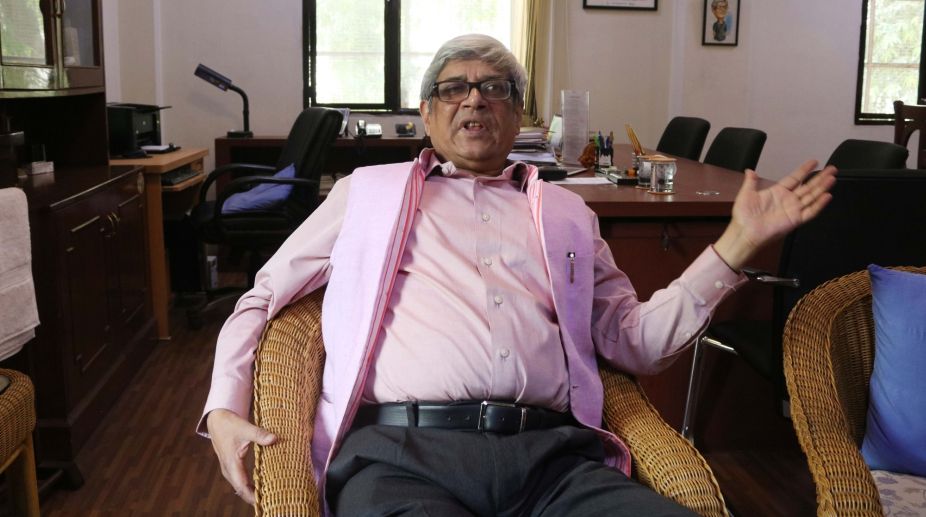Many large companies to move Appellate Authority against GST demand notices
In recent days, an increasing number of GST notices have been sent to many companies mainly on account of alleged discrepancy in input tax credit (ITC).
NITI Aayog Member Bibek Debroy thinks lesser number of tax rates would have been better.

(PHOTO: IANS)
India is a long way off from the ideal GST structure and it may not get there anytime in the near future, says NITI Aayog Member Bibek Debroy, who favours three rates.
While asserting that the move towards the Goods and Services Tax (GST) was a good one, Debroy says it would have been much better if it had lesser number of tax rates.
"My view — for which the government is slightly upset with me — is that we should not have been here (the current GST) but we should have been much closer to the ideal GST," Debroy told IANS in an interview.
Advertisement
"Once we are here, I am not very convinced that we will actually get there (the ideal GST)."
Debroy said that ideally, there should be a single GST rate, but at present "depending on how you count it, you have seven rates".
"Every economist would argue for one rate but no country in the world has that. But instead of seven rates, have three rates," he said.
While the government's stand has been that the system would eventually move towards lesser number of GST rates, Debroy said it now seemed to be a difficult shift.
"My point is that we don't know what those rates would be. Let's assume they are 12, 18 and 24 per cent, which sound reasonable. Can you imagine the tax rate of a product currently at three per cent increasing to 12 per cent? Really tough," the leading economist told IANS.
Gold and gold jewellery are currently taxed at three per cent under the GST regime.
Debroy said that the experiences of other countries had shown that growth and revenue increases happened through increased efficiency when all products were included and there were a maximum of two or three tax rates.
"Therefore, when people say rate efficiency, it will happen, but not right now. In terms of revenue increases, probably not that much beyond the extension of the base, because many more people are brought into the net," he said.
Debroy said that an ideal GST removes all indirect taxes, puts all items under its purview and has a single rate.
"Ideal GST is still a long way off. Most countries in the world that have moved towards the GST have taken more than 10 years to reach there — if they ever have reached there," he said.
The NITI Aayog Member said that while there are statements floating around that 140-150 countries in the world have GST, but that's not really the case.
"What they have is VAT (Value Added Tax) without the service sector being integrated. Proper GST exists in not more than six to seven countries in the world."
"And out of these six-seven countries, with the exception of Canada, all are unitary countries — that is, where the central government decides," he said.
In a country like India, there can't be the central government unilaterally deciding on the rates and several other issues, he said.
"Automatically, we are therefore talking about the dual GST and about the GST council. Now, when you have the GST council with all of the states having different perceptions, even if you assure compensation for revenue losses, what you will have is a long way off from the ideal GST," he said.
"So you will have a lot of products outside the GST like electricity, petroleum products, liquor and tobacco… And depending on how you count it, you have seven rates, not a single one."
Debroy said that a positive way to look at it is that there has been some movement on the issue and that waiting for the ideal GST would have taken 20 more years to generate a consensus.
"So on balance, even as a complicated thing, it's a very good thing that has happened. But it could have been better."
Advertisement